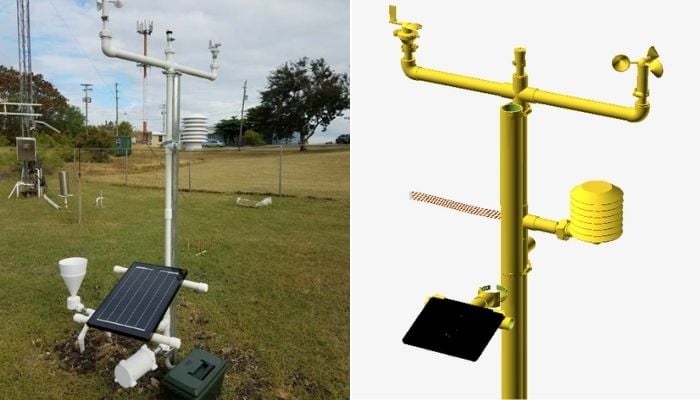Dominican Republic to Install 3D Printed Weather Stations

The Dominican Institute of Meteorology (Indomet), in collaboration with the University Corporation for Atmospheric Research (UCAR) and the United States National Hurricane Center (NHC), is developing a project for low-cost, 3D-printed, automatic weather stations. The initiative, which has an investment of $250,000, aims to strengthen the country’s early warning systems and expand the hydrometeorological monitoring network in a sustainable and accessible way.
The project, named 3D-PAWS (3D-Printed Automatic Weather Stations), was launched in 2013 and has become an efficient alternative for climate monitoring. The main contribution of 3D-PAWS is its stations, made with 3D printers and commercially available sensors. This makes the equipment low-cost, durable, and easy to maintain. Additionally, it allows local meteorological agencies to print and replace damaged components. Its applications range from regional forecasting to agricultural management and tracking climate-related diseases.

The 3D printed weather station, along with its mockup design. (Credits: 3D-PAWS)
In the Dominican Republic, the project is entering its third phase with the installation of stations in the Yaque del Norte River basin, the country’s most important due to its size and social, economic, and environmental impact. Five Automatic Weather Stations (AWS), four rain gauges, two flow meters, one tide gauge, and soil stations with temperature and humidity sensors will be installed there. The collected data will strengthen the country’s capacity to monitor and respond to extreme events.
“Experts have provided Indomet with materials and equipment, including 3D printers, and they will be traveling to the interior of the country to install the stations alongside our technical team, which has been trained for this work,” explained Indomet director Gloria Ceballos to the press, emphasizing the importance of the initiative. “As a meteorological service, we consider the impact of this project to be highly significant for the country. These stations will allow us to expand our monitoring network at low cost, especially in areas with diverse microclimates.”
The stations can be manufactured in approximately one week and cost between $300 and $500 each. Several have already been installed in the United States and in 17 other countries, with positive results. The next steps in the Dominican Republic include installing the equipment, providing continuous training for local personnel, and integrating the data into the national early warning system.
What do you think about the weather stations being installed in the Dominican Republic? Let us know in a comment below or on our LinkedIn or Facebook pages! Plus, don’t forget to sign up for our free weekly Newsletter to get the latest 3D printing news straight to your inbox. You can also find all our videos on our YouTube channel.
*Cover photo credits: COMET Program at the University Corporation for Atmospheric Research (UCAR), via Facebook







